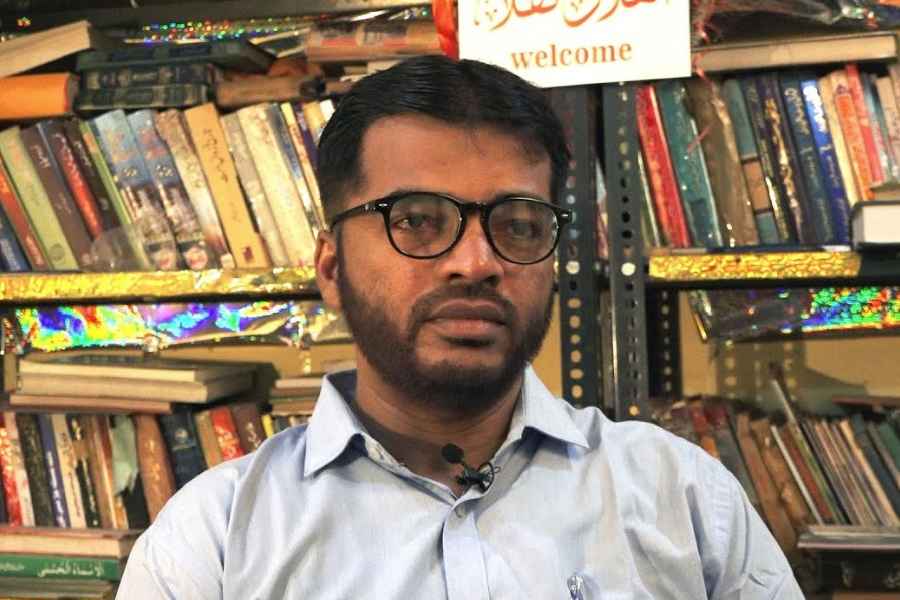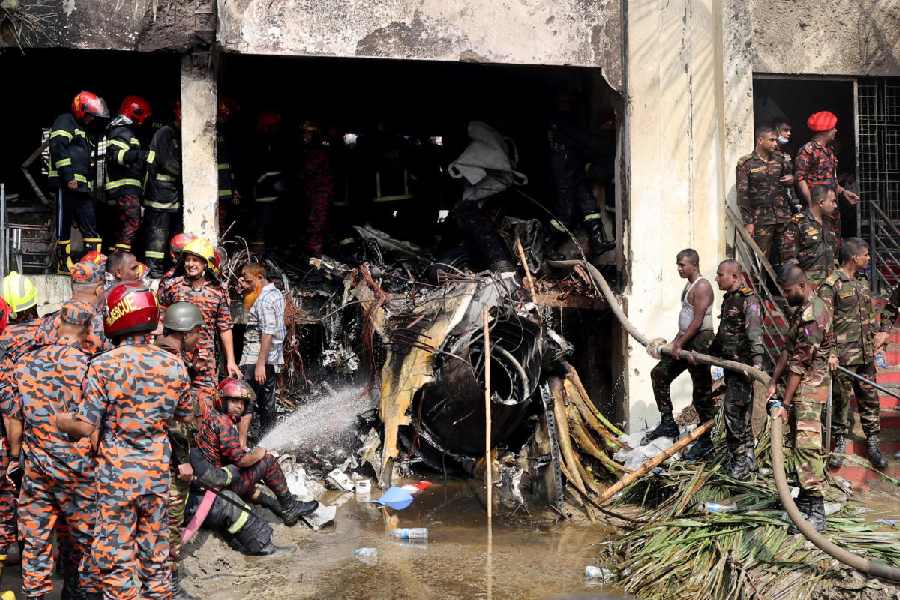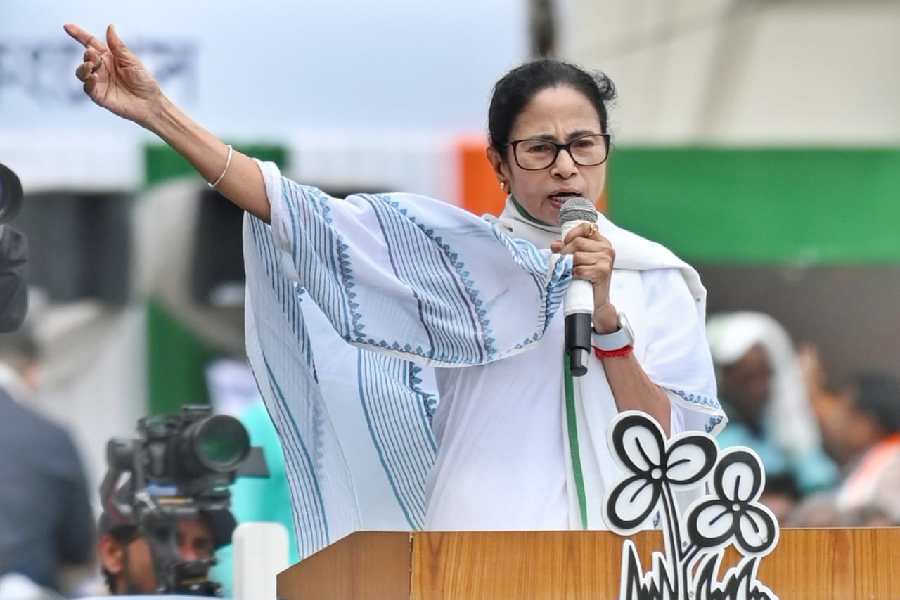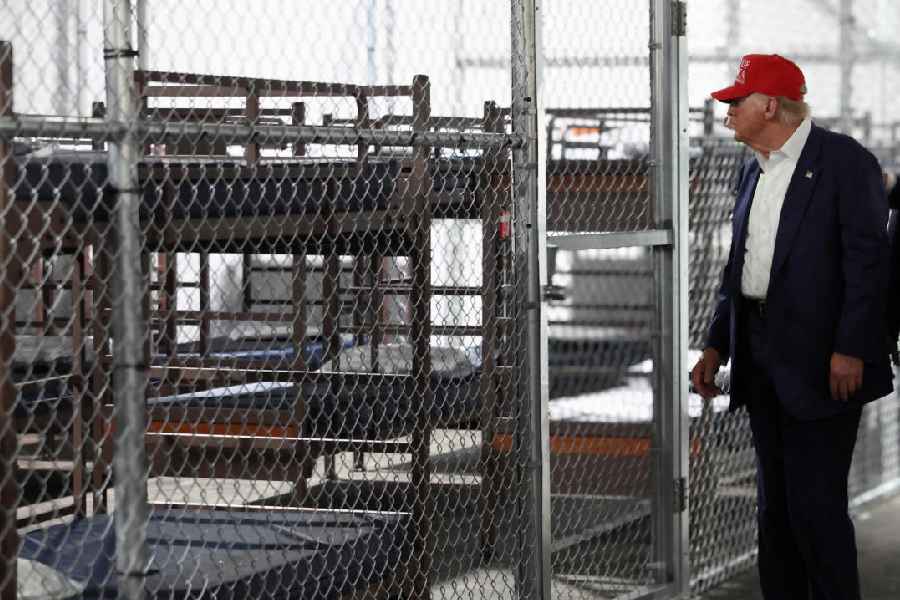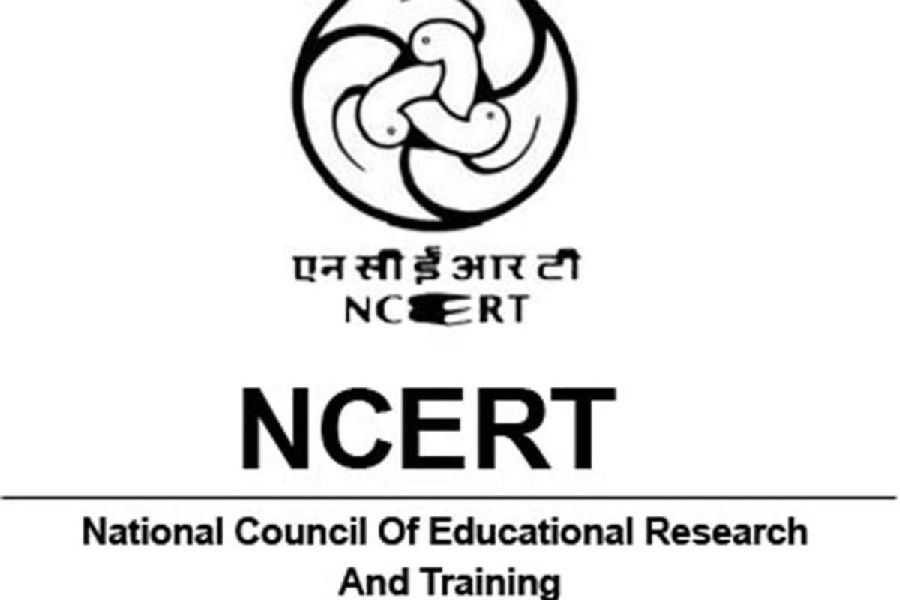 |
| The Bhimnagar Kosi barrage. Picture by Ashok Sinha |
Kusaha (Nepal), June 4: Nitish Kumar is worried over foreign minister S.M. Krishna’s “reluctance” to talk to the Nepal government over the latter stopping the digging of the pilot channels to shift the turbulent Kosi’s course in the middle of its eastern and western embankments in the Himalayan republic.
The Nepal origin river, described as Bihar’s Hwang Ho, had broken the eastern embankment in 2008, playing havoc in five eastern districts, which are yet to be rebuilt and re-habilitated. With the river shifting eastward and weathermen predicting “good monsoon”, the eastern embankment is again under threat.
“I am unable to understand why the external affairs minister is not talking to Nepal. I had met him and had also followed up on that by writing a letter. If the river is not shifted in the middle of its stream it will be hard to save the state from a 2008-like holocaust,” said Nitish, who had met Krishna on May 18 and had written a letter to him in the last week of May.
Sources said the Indian external affairs ministry has asked its embassy in Nepal to take up the issue with the government in Kathmandu.
But there is so far no sign of the Nepal government responding and taking up the issue with its local people (Nepal Maoists) and stopping the channel digging work in the eastern downstream of the river.
In fact, bowing to the rebels’ pressure, the Nepal administration had stopped the channel dredging work in the downstream falling in the Himalayan region in April.
On its part, the Bihar government has tried its best to strengthen the embankment and modernise the 57 gate barrage at Bhimnagar which controls the flow of water.
“We have fully closed the 1,700 metre breach in the eastern embankment that had caused the worst ever flood in living memory in 2008 and have also pitched boulders on the slope,” the superintending engineer, barrage circle, Birpur, Mahesh Thakur said.
Thakur also showed to The Telegraph team the fully automated barrage’s sluice gates which officials in Patna even can see on the screen and monitor the flow of water.
“But we have seen how a well equipped country like Japan failed to check the surge of the waters from the sea and fell prey to nature’s fury. We can’t say for sure that the embankment, even if fully repaired, will succeed in arresting the surge from Kosi,” remarked Thakur, stressing on the importance of digging the pilot channels.A visit to the spot, however, yielded that the locals, heavily under the influence of the gun-wielding rebels, were opposed to the idea of shifting the river’s course.
They fear that the shifting of the course might shift the river’s pressure on the western embankment, the breach of which would cause more damage on the Nepal side.
Showing the satellite pictures, the officials, however, said the perception of Nepal’s locals was wrong and their fear unfounded.
“In fact, the breach in the western embankment in its downstream too will cause more damage in Supaul, Saharsa, Madhepura and Araria districts on the Indian side which Bihar will never like. The shifting of the river’s channel in the middle of its stream is the best panacea in the given situation,” said chief engineer, Birput barrage circles Chandrashekhar Paswan.


